Information behaviour videos on YouTube: an exploratory content analysis, case study of INFIDEOS, and call to action
Jenna Hartel
Introduction.How do landmark concepts of information behaviour appear as videos on YouTube? What do these multimedia artefacts, altogether, suggest about the information behaviour specialty? What might ideal versions of such videos be like?
Method. To create an empirical starting point for answering these timely questions, an exploratory content analysis was performed on a sample of 20 educational videos found on YouTube, focusing upon three big ideas of information behaviour: Kuhlthau's Information Search Process, Dervin's Sense-Making, and Bates's Berrypicking.
Analysis. A coding frame was created with 23 categories and associated subcategories. SurveyMonkey was used to capture, tabulate and present the data. Due to space limitations, not all categories are included in the findings, which are reported as themes with commentary.
Results. YouTube’s information behaviour offerings are: cluttered by look-alike videos; uneven in coverage; dominated by librarians and students; and short on scholarly authority. Though singular, featured concepts can be treated thoroughly, most videos have a narrow focus; no scholarly apparatus; and disregard information behaviour’s legacy and culture.
Conclusions. Following the content analysis, the author’s YouTube channel of Information Science videos, INFIDEOS, is profiled with attention to its information behaviour resources. Throughout, general video-making strategies are provided.
DOI: https://doi.org/10.47989/irisic2226
Introduction
Stretched by the demands of graduate studies, a student of information behaviour does not read an assigned article on the information search process (Kuhlthau, 1988) and instead watches a video with that very title on YouTube. They come to class excited to talk about Carol Kuhlthau as a martini-drinking meditation guru who takes troubled researchers to their happy place. Another student in a neighbouring field is intrigued by a reference to sense-making (Dervin, 1983). Reconnoitring YouTube, they learn that sense-making pertains to decision-making within Fortune 500 companies, and thereby dismiss the notion as irrelevant to their community-oriented project. A recently graduated user experience designer recalls the berrypicking concept (Bates, 1989) from their studies and searches for a video about it on YouTube. Finding next to nothing, they default to design techniques they have used before. In these three cases, the dissemination and application of information behaviour’s big ideas is thwarted, when people turn to the massively popular video platform, YouTube.
Such anecdotes, though fictitious, are based in realistic circumstances and should concern the attendees to the ISIC conference, if we wish for our research area to endure and flourish. YouTube, a video-sharing Goliath and the second most popular online destination after Google, has 1.86 billion users worldwide, a 5% growth rate in the past year (Pavlovskaya, 2021). It is forecasted that internet video will account for 82% of global consumer internet traffic by 2022, up from 15% in 2017 (foundationinc.co, 2022). While popular genres on YouTube are music, product reviews, games, video blogs and comedy, the platform contains volumes of educational materials, as well.
There are many compelling reasons for information scientists or professionals involved in teaching to use videos. The theory of multimedia learning holds that cognitive integration is most likely to take place when the learner has corresponding pictorial and verbal representations in working memory at the same time (Mayer, 2009). A recent and comprehensive review of the use of videos for educational purposes in higher education, reports that such content appeals to a net generation; taps multiple intelligences and learning styles; fosters student attention, focus creativity; and is perceived as making learning more fun (Mazirir, et al., 2020).
YouTube is an especially good storehouse for videos. It is free, familiar and easy-to-use. The platform provides transcripts, closed-captioning, translation, indexing and variable delivery speeds-features which enhance and expand accessibility for all kinds of students. At the same time, drawbacks of using YouTube videos for educational purposes have been voiced: the quality and accuracy of content is uneven; comments may be inappropriate and distracting; and some users could be blocked from access (Snelson, 2018). Nevertheless, seen overall as a resource for teaching and learning, the advantages of YouTube outweigh its shortcomings. Per the suggestion of a reviewer of this paper, I recognize and applaud the many Information Science videos appearing outside of YouTube, whether within proprietary course shells, public online learning sites such as Coursera, or elsewhere.
Foregoing any neutral stance, I write this paper with a passion to make Information Science videos, in particular about information behaviour. I have long been concerned that our great insights are stuck in a print-based Stone Age, locked behind elite university paywalls, gathering dust and risking obsolescence. During my 2021-2022 sabbatical, I dedicated myself to become a video creator and in May 2021 launched INFIDEOS, a YouTube channel of Information Science videos. As of May, 2022, INFIDEOS contains 48 videos and more are forthcoming. To develop a better understanding of the competitive landscape on YouTube for videos about Information Science and information behaviour, the study at hand asks these research questions:
- How do landmark concepts of information behaviour appear as videos on YouTube?
- What do these multimedia artefacts, altogether, suggest about the information behaviour specialty?
- What might ideal versions of such videos be like??
At the ISIC conference 2022 I wish to brief the information behaviour community on its YouTube standing; report my INFIDEOS initiative; gather feedback on its future directions; encourage others to become video-makers and suggest a few video-making strategies.
Research method: exploratory content analysis
This study engages the research questions in an exploratory (Stebbins, 2001) spirit using content analysis. Content analysis is a descriptive empirical research method for systematically analysing communications to discover meaningful patterns (Schreier, 2013), and is an ideal means to audit information behaviour videos on YouTube. The sample consists of videos on YouTube about three landmark ideas: the information search process, sense-making and berrypicking, profiled in Table 1. These three concepts were chosen as a focus due to their significance in the literature; close association with individual scholars and specific source publications; consensus on their meanings; and relevance to practice. Some of our more recent, sprawling, elusive, or contested notions, such as information need, information practice, or embodied information, would be harder to translate to videos and benchmark on YouTube. My own videos will not be included in the content analysis that follows but will be profiled separately.
| information search process (ISP) | sense-making (SM) | berrypicking (BP) | |
|---|---|---|---|
| author and source publication | Carol Kuhlthau (1991) | Brenda Dervin (1983) | Marcia Bates (1989) |
| summary statement | An empirically generated frame- work about the information seeking behaviour of students writing an essay. It delineates six stages of information seeking; a principle of uncertainty; and three dimensions of feelings, thoughts and actions. Developed over many years, the information search process has been extended to other contexts. | A theory of communications with applications to information behaviour. It sees people as moving through time-space and being stopped by gaps (information needs). “Sense-making” is what occurs as people overcome, or bridge, the gaps with new understandings. Sense-Making has theoretical, methodological and practical implications. | A design-oriented model of information seeking and searching as iterative with evolving queries. Different collections and search strategies are used along the way. Both searching and browsing are seen as important functionalities at the interface to document repositories. Many design recommendations are provided. |
| diagram |
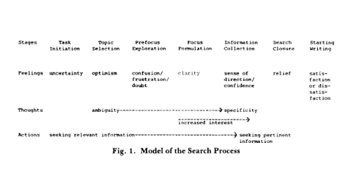
|
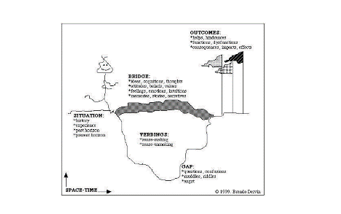
|
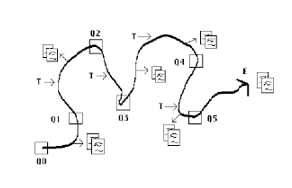
|
To collect a sample for the study, an incognito window of the Chrome browser was taken to YouTube. Using YouTube’s built-in search function (with no filters and sorted by relevance), keyword searches were performed for each concept, as shown in Figure 1. The search was designed to imitate how a time-pressed student might search. Innumerable videos were returned. The videos assigned to the sample were restricted to those primarily dedicated to the focal concepts, in English, <25 minutes in length and published between 2010 and 2020. After reviewing the highest ranked videos’ metadata, thumbnail images and descriptions, a sample was assembled of 20 videos, unevenly distributed across the information search process (10), sense-making (8) and berrypicking (2). An initial round of viewing revealed that 6 of the videos were off topic. These videos were removed from the sample but will be discussed shortly as an important finding. The final sample consisted of 14 videos on the information search process 9), sense-making (3) and berrypicking (2).

Figure 1: The keyword search strategies used to create the sample.
A coding frame was created with 23 categories and associated subcategories related to the research questions; it appears in the Appendix. Many of the questions simply captured formal aspects of the videos, such as their title, year of publication, length in minutes and number of views. Some questions related to the context of the videos, namely the identity and qualifications of the video maker(s) or the topical theme of the hosting channel. The majority of questions, though, pertained to the content of each video, such as whether it provided biographical information (about the idea’s originator, e.g. Kuhlthau, Dervin, or Bates), and whether it contained elements that are standard in teaching and scholarship, such as a definition, references, additional information behaviour concepts, context in the literature and a superficial or thorough treatment. Subcategories were derived deductively or inductively and refined through testing.
In the interest of objective social scientific research, I confess that I am not a neutral observer of information-related educational videos on YouTube. Rather, I have a vested interest in my own videos and strong opinions about the qualities of ideal videos. In this exploratory study, I did not enlist a second coder to ameliorate potential biases. However, I carefully and constantly monitored my feelings through the analysis process, with an eye to fair evaluations, and when in doubt, assigned values generously.
SurveyMonkey was used to capture, tabulate and present the data. Due to space limitations, not all categories are included in the findings, which are reported next as themes with my commentary.
Findings
There are many video look-alikes
Some information behaviour videos have doppelgangers on YouTube. Six of the 20 videos initially included in the sample for sense making (5), were not Dervin’s idea; the same mishap struck the information search process once. I believe that most students would unwittingly watch and embrace these look-alikes. Going forward, information behaviour video-makers should assign distinctive titles and detailed description fields to disambiguate our ideas from others. Table 2 shows the 6 misleading videos removed from the sample.
| look-alike videos removed from the sample (6) | The Information Search Process What is Sense-Making? Nora Bateson What is Sensemaking | Explained in 2 minutes What is “Sensemaking”? Elizabeth Pastor Introducing SenseMaking Sensemaking) |
| videos included in the sample (14) | Carol Kuhlthau’s Information Search Process Model Kuhlthau Information Search Process Kuhlthau’s Information Search Process READ 6418 Information Search Process 1 Kuhlthau Information Search Process TT Dr. Carol Kuhlthau Distinguished Professor Emerita Talks of her Research on the information search process Information Search Process Information Search Process What is SENSEMAKING? What does SENSEMAKING mean? SENSEMAKING meaning, definition & explanation Sense Making Methodology Reader Selected Writings of Brenda Dervin Communications Alternatives Information needs and user behaviour NUS CS4249 Berrypicking, Information Scent and Information Foraging Information Behaviour |
Information behaviour concepts are represented unevenly on YouTube
Misidentifications aside, information behaviour concepts were found unevenly across YouTube. With 9 videos in the sample, the information search process is represented relatively well. This may be attributed to the theory’s reach and popularity. Kuhlthau is read in education and information science and is the most often-treated information behaviour concept taught in reference courses (VanScoy, Julien, & Harding, in press). With only 3 and 2 videos qualifying for the sample, respectively, sense making and berrypicking are poorly represented on YouTube. What is worse, berrypicking accounts were embedded in videos having broader themes. Given the popularity of sense making and PB across information science (and beyond), and their use of accessible and vivid metaphors, their neglect on YouTube is hard to explain.
Librarians and students dominate video creation
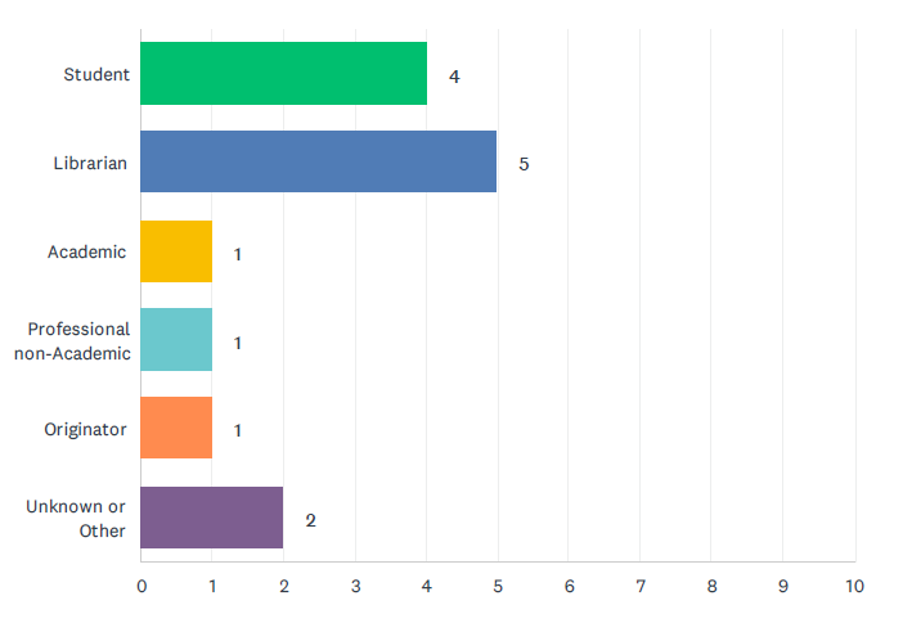
Figure 2: Question 6: What is the creator type?
With 5 videos in the sample, librarians were the foremost creators of information behaviour videos on YouTube. These videos were among the best, due to the librarian’s knowledge, warmth, authoritative personal reflections and good production values. For profiles of these standout videos, see Table 3. We should all applaud and thank librarians for their multimedia contributions to information behaviour education.
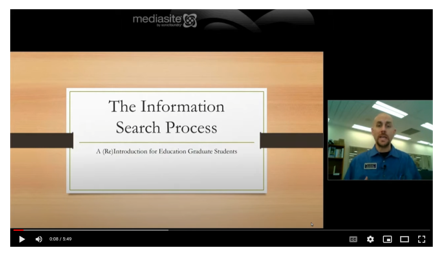
|
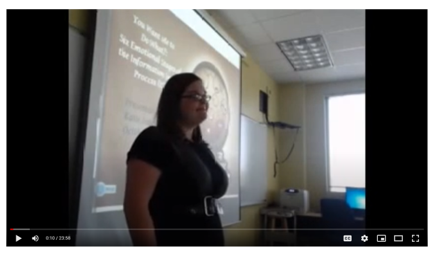
|
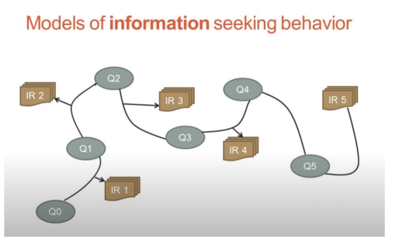
|
| An instructional technology Librarian at a small US college made this detailed 3-part video series on the information search process His manner is dynamic, warm and authoritative. He includes intellectual history of Kuhlthau’s work and emphasises that the student viewers have had this search experience themselves. | A reference librarian delivers a superb guest lecture on the information search process. She includes its roots in the cognitive psychology of George Kelly (the only video to do so). Her manner is animated, friendly and experienced. After walking through the information search process stages, she lingers on its applications and leaves the students with a helpful bibliography. | A librarian (not pictured) provides a solid introduction to information behaviour and Berrypicking is one of four models covered. The speaker is upbeat and thoughtful, sharing personal reflections, such as, “Berrypicking is my favourite model.” |
Having 4 videos in the sample, students contribute information behaviour videos to YouTube as deliverables for course assignments. These videos often make a hip and charming impression. Problematically, though, they disregard scholarly conventions and sometimes favour entertainment over learning, illustrated shortly. In my opinion, students should not be interlocutors for the information behaviour literature to YouTube’s sizable audience.
Scholars of information behaviour are not contributing videos to YouTube
Academics, who are the leading spokespersons for their research areas, produced only two videos in this study (combining the categories of academic and originator, in Figure 2). It appears that scholars of information behaviour are not yet players on YouTube. This is unsurprising since videos are an unconventional means of scholarly knowledge transfer. Nevertheless, the shortfall of expert academic voices on YouTube strikes me as an abdication of responsibility that the ISIC community should recognize, discuss and address.
PowerPoints and animations are common video types
The sample contained seven different video types, as shown in Figure 3, which can be reduced to two primary techniques. Animations (5), such as cartoons or white boards, are preferred by students. PowerPoints (7), with or without the narrator’s visual presence, are favoured by librarians and academics.
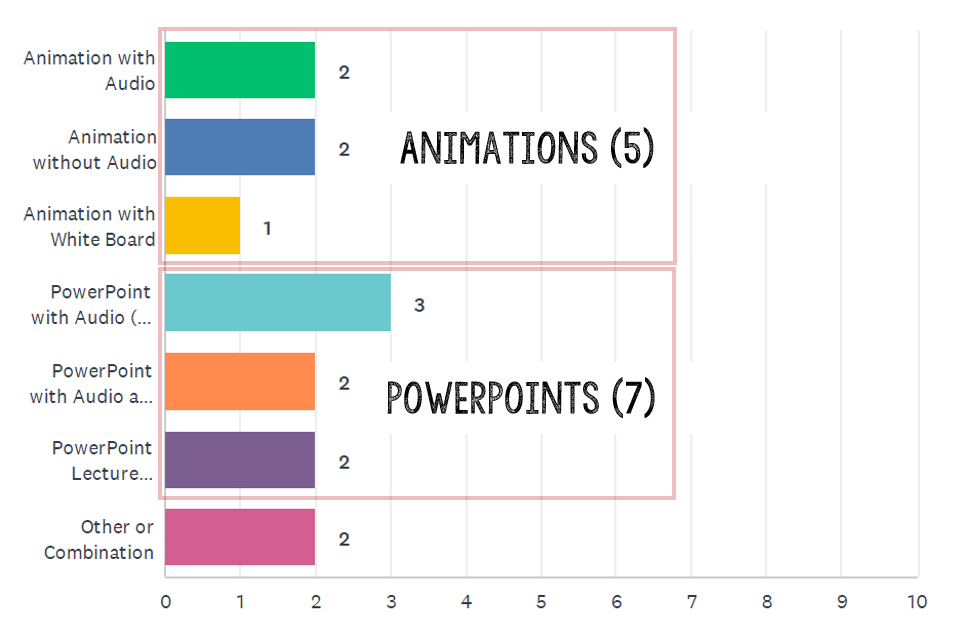
Figure 3: Q11. What is the video type?
The animations made by students use free, web-based tools such as PowToons or Animaker. Such software helps even novices generate quasi-professional results and may appeal to youthful viewers. However, student video-makers often embellished their videos with distracting or inappropriate flourishes, as shown in Table 4, left and middle. Also, some lively animations eclipse the information behaviour concepts they feature. For example, a 14-minute cartoon about the information search process tells a poignant story of a lonely woman buying a pet. Though the essential elements of Kuhlthau’s concept underlie this plot, the lasting impression was the story’s happy ending, when the protagonist brings her new cat home, Table 4, right.
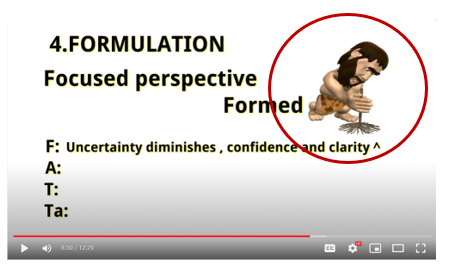
|
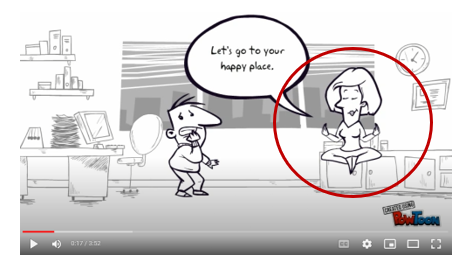
|
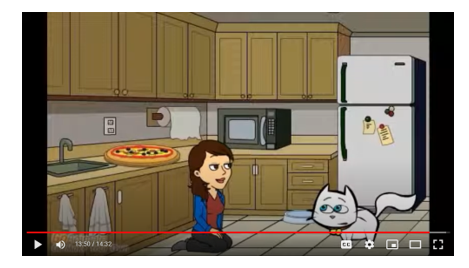
|
| This animated video about the information search process covers many of its tenets with good; at the same time, it employs mostly irrelevant, conflicting and even offensive imagery. | This animated information search process video has an edgy quality and hard rock music. However, the creator’s desire to entertain viewers sometimes placed the idea in a ridiculous light. (Here, Carol Kuhlthau levitates like a meditation guru.) | This creative animated video illustrates the information search process in the context of buying a pet. Unfortunately, the story could potentially eclipse the tenets of Kuhlthau’s idea. |
When video-making, librarians and scholars choose a tried-and-true communications tool, PowerPoint. Such videos feature a slide deck and accompanying narration, sometimes with the speaker visible on a split screen. A variation is to video-record a live PowerPoint lecture. Advantageously, PowerPoint-based videos contain much information in a familiar form. Unfortunately, they are sometimes boring; fail to capitalise on the creative potentials of the video medium; and are prone to technical difficulties, as shown in Table 5.
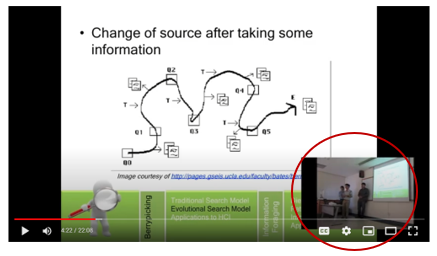
|
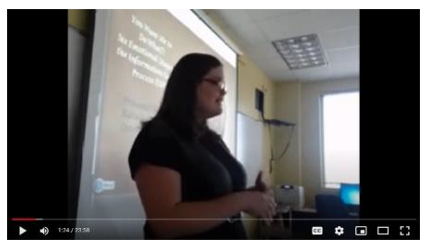
|
| Blurry screen and overly small presenters. | Blurry screen and odd viewing angle. |
Placing these two favoured styles aside, it is noteworthy that landmark information behaviour concepts are rarely represented in other kinds of videos, such as interviews, documentaries, screen captures, or combinations of multiple styles. What is more, the majority of videos (6) scored average production values and none were deemed high, suggesting a lack of creative ambition in information behaviour videos on YouTube.
Featured concepts are giving thorough treatment
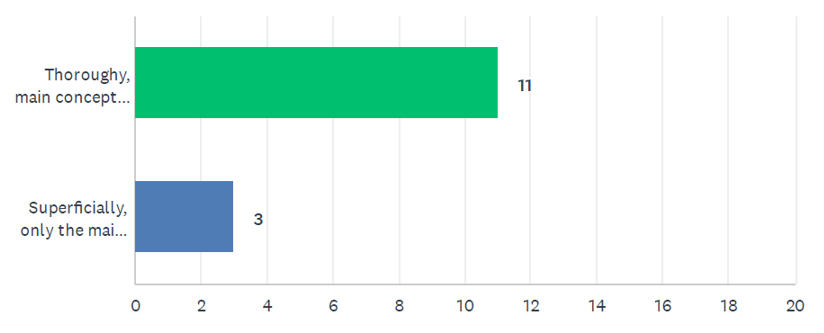
Figure 4: Question 18. How thoroughly is the concept treated?
To the credit of the video-makers in the sample, 11 were seen as treating the featured concept thoroughly (mentioning several elements) rather than superficially (mentioning just one element). Examples of thorough treatment include HecStory speaking about the information search process for several minutes as follows,
'...now let us proceed to the second stage of our information search process model which is called your selection. Selection is when a general area or topic or problem is identified and there is now a readiness to begin a search. Also remember that the feelings of anxiety are likely to intensify until the choice is made again'.
Describing berrypicking, the librarian A.L. spends three minutes explaining,
'...the berry-picking model, or the dynamic model, this is actually my favourite model of information seeking…the searcher’s information needs and consequently their queries continually shift and information encountered at one point in a search may lead in a new unanticipated direction'.
Information behaviour videos on YouTube lack scholarly apparatus
Though the majority of the videos contained thorough treatments of their concepts, all were narrow in their focus upon its rudimentary mechanics. Many of the videos lacked the scholarly apparatus that lends depth, integrity and perspective to literature; to this point, relevant findings appear in Table 6, at left. At right, the findings are parlayed into recommendations for future creators of information behaviour videos.
| Summary Findings Related to the Treatment of the Concept | Do THIS for Better Videos |
|---|---|
| 29% of the creators introduce themselves and provide their credentials, giving their video a mysterious quality. (Q8). | Begin by introducing the creator or speaker. Further, the creator’s biography should be provided on the Channel home page. |
| 50% start with a succinct definitional statement on the featured concept (Q13). | Always provide a succinct definition of the concept early in the video. |
| 71% identify the originator of the concept in name only, without any additional biographical details. (Q14). | Identify the originator of the concept and provide a few biographical details, too. |
| 36% say something about historical context (e.g. how the concept originated, its place in the literature) (Q15). | Report how the concept was generated or how the concept fits within trends in the research area. |
| 64% of the videos include the original diagram associated with the concept (Q16). | Show the original graphic representation associated with a concept. |
| 50% provide a source document or bibliography (Q17). | Follow referencing protocols for documents. (References may appear on screen when the concept is presented; at the end of the video; or in the description box below the video). |
| 64% state implications of the concept. (Q19). | Explain any impacts of the concept on people, information systems, services, collections, policies, or institutions. |
| 36% mention other information behaviour concepts (A20). | Present related concepts; address similarities, differences; or conflicts. |
| 29% provide a critical perspective or personal reflections (Q22). | Voice any problems or objections to the concept; and/or provide personal reflections or insights. |
Context is often overlooked in information behaviour videos
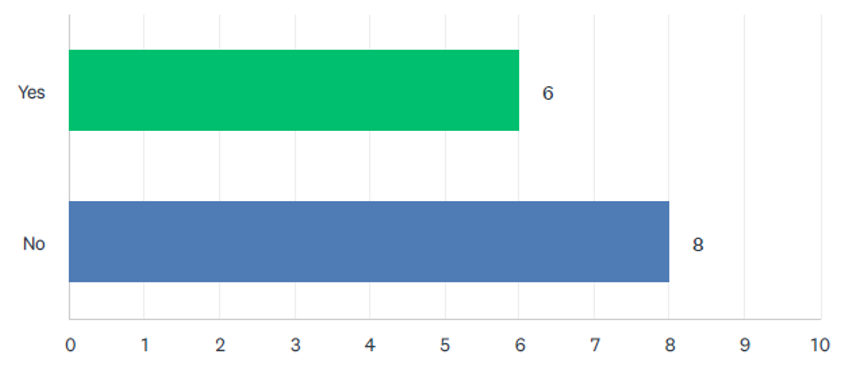
Figure 5: Q23. Is the concept placed in any particular social or cultural context?
Attendees to the ISIC conference might be eager to know how context is treated in information behaviour videos. It is important to remember that the three landmark ideas predate the ISIC movement and emerged within the field’s cognitive paradigm of the 1980s, which side lines context. Nevertheless, the information search process, sense making and berrypicking all include a clear position statement on context. The information search process is situated in a high school class of gifted students doing library research (Kuhlthau, 1988). Sense making posits myriad information seeking situations, thereby emphasising unique contexts (Dervin, 1983). Indeed, Dervin became a leading theorist of context in information behaviour with her famous keynote (1997), ‘Given a Context by Any Other Name: Methodological Tools for Taming the Unruly Beast‘. According to Bates (1989), the Berrypicking search occurs in a small universe of interest that is located within a larger universe of knowledge.
Yet, less than half of the videos (6) in this sample mention any information behaviour context, instead taking a generic and abstract approach. Concomitantly, there were few real-life examples of information behaviour (excepting the aforementioned cat story). Most videos share a strong inward focus on the concept’s moving parts, with much less attention to the outward circumstances or setting of information seeking.
Information behaviour’s accumulated contributions and culture are neglected
The information behaviour specialty is long-standing and one of the strongest within Information Science. Over many decades we have made significant discoveries that are interconnected and cumulative. There is a rich culture with personalities, metatheoretical clusters (Talja, et al. 2005) and multiple interesting turns (Hartel, 2019 having coherent overarching narratives. These rich and nuanced assets are neglected in the videos of this sample.
To explain, people (both video makers and the concept’s originators) appear without their stories or roots. Most videos fail to mention other information behaviour concepts, which suggests each idea is independent. The majority of videos are one-offs that reside on eclectic YouTube channels, sitting alongside movie reviews or vacation accounts. Altogether, the videos suggest information behaviour is fragmented and socially anonymous. The findings (some aforementioned) related to our specialty’s culture are reported in Table 7, at left. At right are tips for future video makers to fortify the collective dimensions of information behaviour in their videos and channels.
I suspect that librarians and students (the majority producers of videos) do not have the bigger and longer view of information behaviour, at issue here. The problem might be corrected if scholars became video creators, sharing their more sophisticated historical, social and cultural understandings.
| Summary findings related to Information Behaviour’s Culture | Do THIS for videos that reflect Information Behaviour’s Culture |
|---|---|
| 29% of video creators introduce themselves. (Q8). | Begin by introducing the creator or speaker. Further, the creator’s biography should be provided on the Channel home page. |
| 36% of the videos reside on a channel devoted to Information Science. (Q10). | Create and curate more videos about information behaviour and place them together on dedicated channels. |
| 14% of the videos provide biographical details about the concept’s originators. (Q14). | Provide relevant biographical details to bring the concept originators to life. If possible, show them speaking. |
| 36% of videos address historical context. (Q15). | Report how the concept was generated or how the concept fits within trends in the research area. |
| 50% of the videos provide a source document or bibliography. (Q17). | Follow referencing protocols for documents. (References may appear on screen when the concept is presented; at the end of the video; or in the description box below the video). |
| 36% of videos mention other information behaviour concepts. (Q20). | Present related concepts; address similarities, differences; or conflicts. |
Case Study of INFIDEOS
Against the backdrop described above, in May 2021, I launched INFIDEOS, a YouTube channel of educational videos about information science, spotlighting foundational ideas of the field and its information behaviour specialty. The channel gets its name as a portmanteau of information and videos. The primary target audience for INFIDEOS are newcomers, students, educators and researchers within information science, broadly construed. The secondary target audiences are self-same counterparts in neighbouring disciplines, information professionals and curious members of the public. As of February 1, 2022, there are 49 videos on INFIDEOS.

Figure 6: The banner at the YouTube channel, INFIDEOS, launched in May, 2021.
INFIDEOS is organised into series to facilitate learning. That way, returning viewers can benefit from familiar narrative arcs and educators can more readily integrate multiple episodes of a series into their courses.
The What Makes This Paper Great? series offers a deep dive into landmark papers of information science, lasting 15-17 minutes each. To begin, the featured paper and concept are defined, followed by statements on the intellectual history, structure, rhetorical strategy, highlights and ultimate impacts of the paper. Each video concludes with reflections on its strengths, impacts, or extensions. For example, the WMTPG? video on Sonnenwald’s information horizon interview (Sonnenwald, et al., 2001) concludes with brief sketches of recent extensions by Savolainen and Kari (2004), Huvila (2009) and Greyson, et al. (2017). Throughout there are entertaining insider tidbits, for example Marcia Bates’ license plate is INFO; and there are many references, too. Any of the videos in this collection might be used inside or outside of class time. Assigning the original paper and the video would be an especially powerful learning experience for students. The What Makes This Paper Great? series features eight episodes, displayed in Figure 7 and more are forthcoming. (I am especially eager to hear the ISIC community’s preferences for additional episodes in this series.)
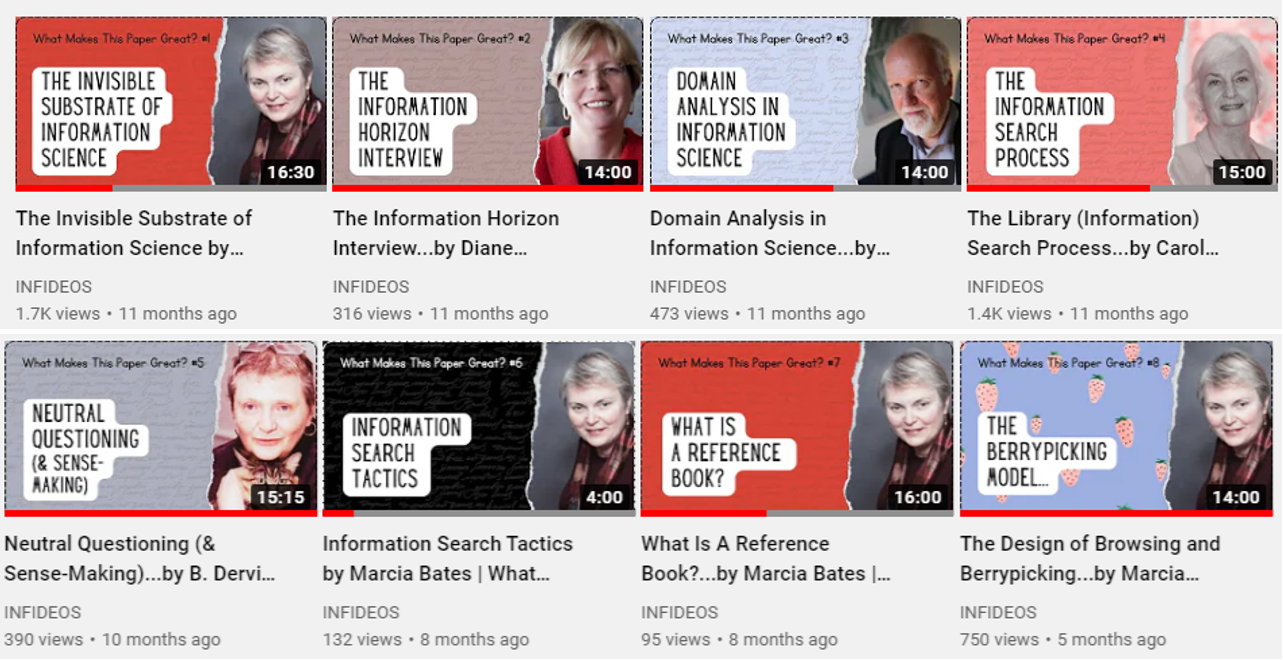
Figure 7: The thumbnail images and metadata from the What Makes This Paper Great? series.
The Tiny Video series presents big information science ideas in videos of 15 to 30 second in length. These resemble content on TikTok or spirited advertisements for scholarly products. Though slight (in time), they are meant to have a big impact on curiosity. To that end, many make a surreal or dream-like impression. It is my hope that the Tiny Videos go viral beyond information science and spread the great work of our field far and wide. The ISIC community will be pleased to know that more than 50% of the 28 Tiny Videos showcase information behaviour concepts. Tiny Videos are perfect to animate a course website; enliven an email to students; launch a lecture; or stimulate a class discussion.
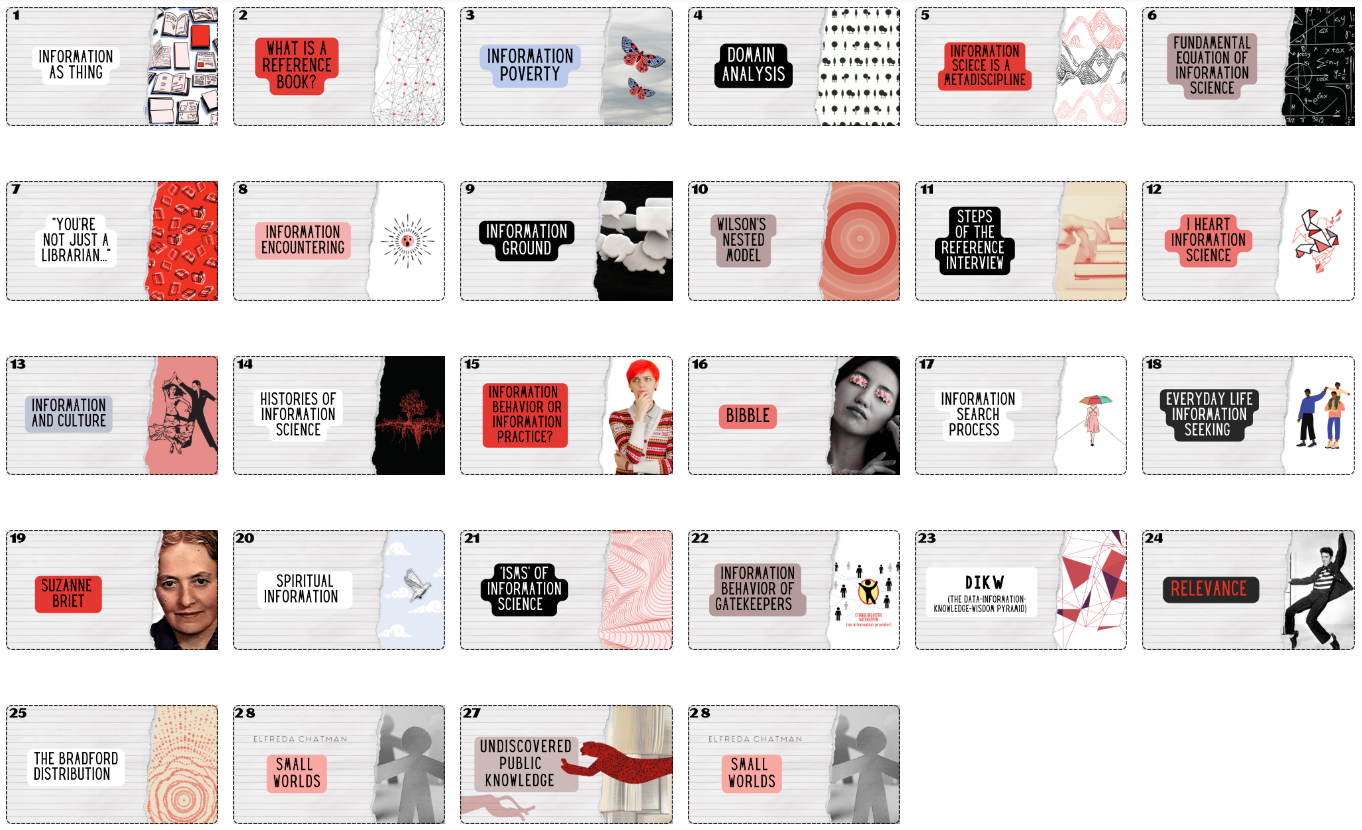
Figure 8: Thumbnail images from the Tiny Video Series.
Finally, there is the information and leisure series, shown in Figure 9, which introduces leisure as a context for information behaviour, my specialty (Hartel, 2007). This series is interdisciplinary and draws heavily from the field of leisure studies. INFIDEOS also contains a handful of videos that do not fit perfectly into any series, such as How do I write a conceptual paper (Advice for Doctoral Students), limericks on plagiarism and the crossroads of information and love among others.
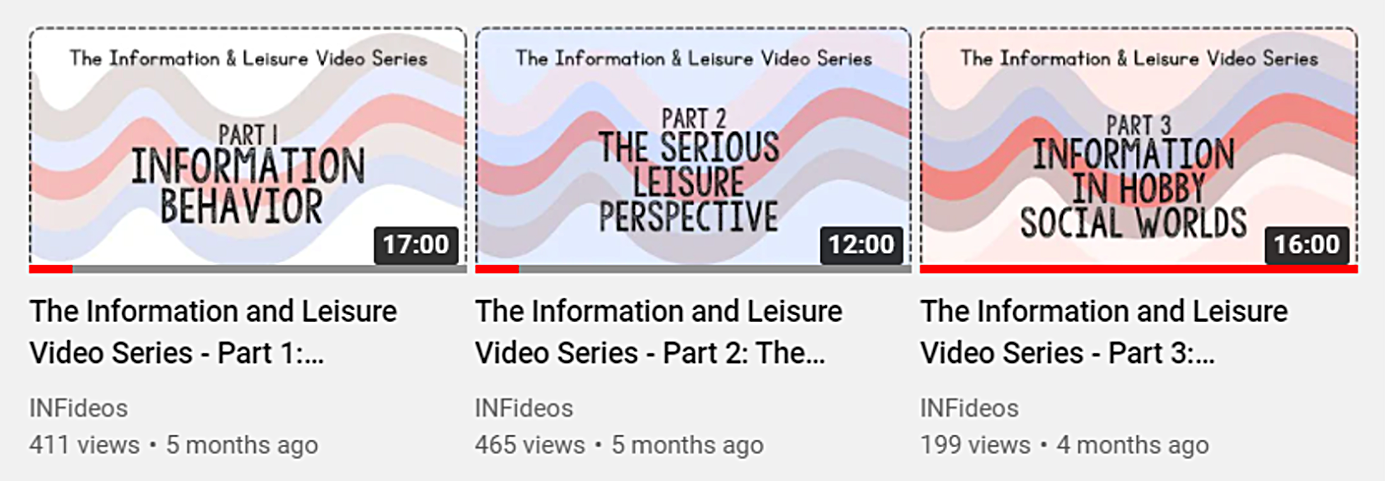
Figure 9: Thumbnails from the Information and Leisure series.
Many of the 50+ videos at INFIDEOS are organised into themed YouTube playlists. This way, eager learners can move systematically through curated content. In contrast to the fragmented impressions given by the videos in the content analysis, the playlists show the coherence and culture of the information behaviour area. For example, the information behaviour playlist contains fourteen videos, as shown below. It unfolds as follows: nine tiny videos pique curiosity; a broad overview to information behaviour provides fundamentals; and four episodes of what makes this paper great? explore, in depth, landmark information behaviour ideas by Bates (1999), Kuhlthau (1991), Dervin and Dewdney (1983), and Sonnenwald (2001). Educators take note! If necessary, the playlist could stand in for an entire class session, in emergency circumstances.
The fourteen videos on the information behaviour playlist:
- Wilson's Nested Model (Tom Wilson) | Tiny Video Series (#10)
- Information Encountering (Sanda Erdelez) | Tiny Video Series (#8)
- Information Ground (Karen Pettigrew) | Tiny Video Series (#9)
- Information Poverty (Elfreda Chatman) | Tiny Video Series (#3)
- Information Search Process (Carol Kuhlthau) | Tiny Video Series (#17)
- Everyday Life Information Seeking (Reijo Savolainen) | Tiny Video Series (#18)
- Information Behaviour or Information Practice? | Tiny Video Series (#15)
- Information Seeking Behaviour of Gatekeepers (Cheryl Metoyer-Duran) | Tiny Video Series (#22)
- BIBBLE (Marcia Bates) | Tiny Video Series (#16)
- The Information and Leisure Video Series - Part 1: Information Behaviour
- The Design of Browsing and Berrypicking...by Marcia Bates | What Makes This Paper Great? (#8)
- The Library (Information) Search Process...by Carol Kuhlthau | What Makes This Paper Great? (#4)
- Neutral Questioning (& Sense-Making)...by B. Dervin & P. Dewdney | What Makes This Paper Great? (#5)
- The Information Horizon Interview...by Diane Sonnenwald | What Makes This Paper Great? (#2)
Thus far, INFIDEOS has been well-received. There are presently almost 400 subscribers to the channel and some videos have upwards of 500 views. An educator at the San Jose State University emailed me:
Jenna - Thank you so much for your YouTube channel and the videos on [library and information science]. I have incorporated them into 'helper' pages for INFO 200 Information Communities at SJSU School of Information. Because I coordinate the course content for all sections, every student we have in 200 will have a chance to see your work. :-) I so appreciate your style and the approach you take.
And a librarian teaching a course at a junior college also reached out to say:
I am emailing you now because I just discovered your YouTube channel and am definitely, DEFINITELY assigning some of your videos for my class! I have not watched them all yet but love, love, love the one on Marcia Bates' berrypicking article. I had wanted to assign that article but worried students with no knowledge of the field might find it hard to relate to. I am still assigning it, but alongside your video, which offers a great introduction and context...Anyway, what I'm trying to say here is, thank you for your work...
A grateful student posted this positive comment on the WMTPG? episode about domain analysis in information science:
I thank you so much for creating this video! I am studying domain analysis for a class and the way you walked through the paper really helped me grasp its significance. I am grateful for the way you presented the paper's structure, place in the LIS literature, and conclusions/application. While I'm still learning about this concept, I can say this video helped me, and I wish a video like this would be possible for every [library and information science] paper I need to read ;)
INFIDEOS is still in its formative period. At the ISIC conference, I welcome all feedback, in particular: What information behaviour concepts merit dedicated videos? What are the ideal features of these videos? Putting the INFIDEOS channel aside, I feel our community should discuss how to use videos to disseminate our ideas to more people.
Conclusion
YouTube and its video corpus are a great opportunity for information science and the information behaviour community. We can gear our intellectual property to a world that is trending towards multimedia communications, preventing its obsolescence. With an eye to diversity and democracy, we can circumvent the paywalls that block learners worldwide from our literature and conversation. What is more, the affordances of video make it possible to endow rather staid and static concepts with dynamism, aesthetic appeal and emotional resonance.
Ideally, scholars could bring their sophisticated and holistic perspectives to this video-making enterprise, enhancing the material generated by librarians and students, who have jumped ahead of us. Alternatively, there are thousands of skilled video creators on standby in online marketplaces such as Fiverrr, who can become our collaborators in the video-making process. Of note, one video in the sample was nuanced, comprehensive and riveting-deserving its 3,592 views. It was by Carol Kuhlthau, herself, the inventor of the information search process, shown in Figure 10. Perhaps the primary responsibility for anchoring an idea in the multimedia information universe should fall to its originator.
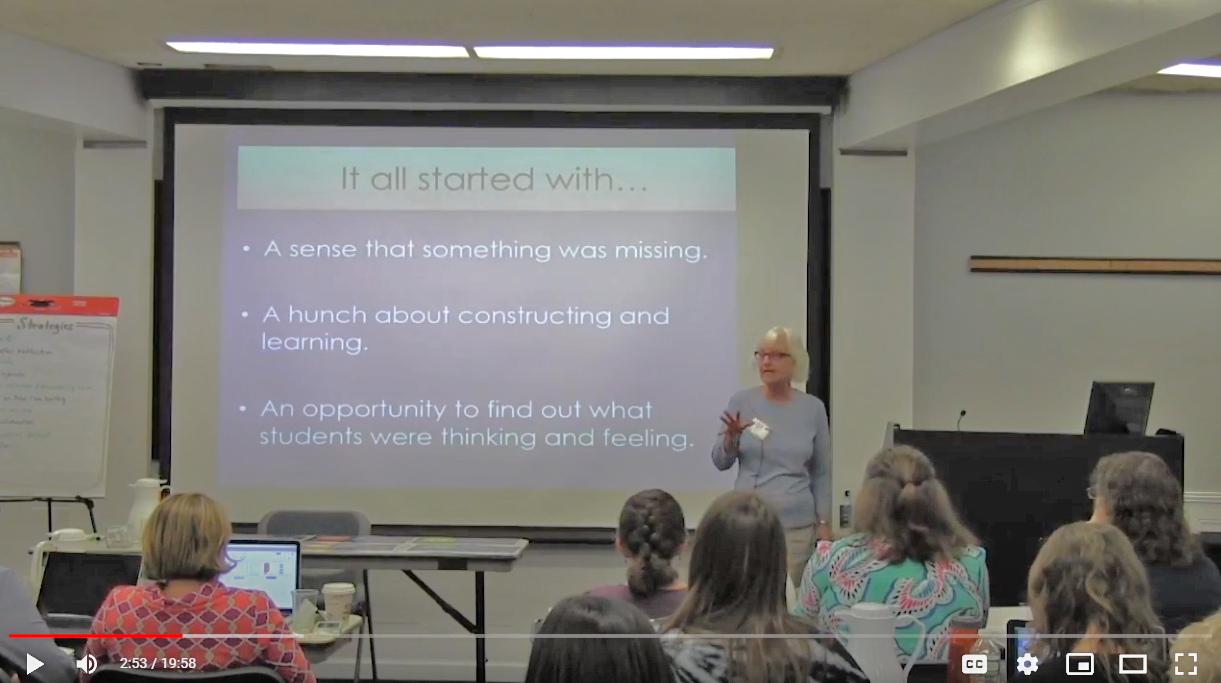
Figure 10: A screenshot of Carol Kuhlthau giving a guest lecture to students of Library and Information Science.
Synthesising, consolidating and disseminating our scholarship has been a long-standing challenge for information science and the information behaviour specialty, as well. To that end, in 1999, Howard D. White (1999) posted a mock-advertisement in JASIS&T, entitled scientists-poets wanted. It sought multi-talented recruits to write spirited and accessible books on the field’s most important themes; today, that call-to-action might be video-makers wanted.
About the author
Jenna Hartel is an Associate Professor at the Faculty of Information, University of Toronto. She is the creator of the YouTube channel of educational videos about Information Science, INFIDEOS. Her work aims to be an imaginative, energetic, and committed form of intervention in the field. She believes a different character of Information Science is possible, one that moves beyond pragmatic concerns with information resources and technologies to consider positive and upbeat information phenomena across the entire human experience. To that end, her are expressed and packaged in non-standard forms of presentation that are playful and accessible to all. She hopes to be a catalyst, endeavouring to inspire and encourage Information Science to explore new areas, import new methods, and break out its traditional boxes.
References
- Bates, M.J. (1989). The design of browsing and berrypicking techniques for the online search interface. Online Review, 5, 407–424. https://www.emerald.com/insight/content/doi/10.1108/eb024320/full/html (Internet Archive)
- Bates. (1999). The invisible substrate of information science. Journal of the American Society for Information Science, 50(12), 1043–1050. 3.0.CO;2-X>https://doi.org/10.1002/(SICI)1097-4571(1999)50:12<1043::AID-ASI1>3.0.CO;2-X
- Dervin, B. (1983). An overview of Sense-making: concepts, methods, results. International Communication Association Annual Meeting
- Dervin, B. (1997). Given a context by any other name: methodological tools for taming the unruly beast, in Vakkari, P., Savolainen, R. and Dervin, B. (Eds), Information Seeking in Context, Taylor Graham, 13-38. https://tefkos.comminfo.rutgers.edu/Courses/612/Articles/dervin97context.pdf (Internet Archive)
- Foundationinc.co. (2022). 41 Need-to-know YouTube statistics for marketers in 2022. Foundation Blog. https://foundationinc.co/lab/youtube-statistics-b2b-marketers/ (Internet Archive)
- Greyson, O’Brien, H., & Shoveller, J. (2017). Information world mapping: A participatory arts-based elicitation method for information behaviour interviews. Library & Information Science Research, 39(2), 149–157. https://doi.org/10.1016/j.lisr.2017.03.003
- Hartel, J. (2007). Information activities, resources, and spaces in the hobby of gourmet cooking. (University of California PhD dissertation)
- Huvila. (2009). Analytical information horizon maps. Library & Information Science Research, 31(1), 18–28. https://doi.org/10.1016/j.lisr.2008.06.005
- Kuhlthau. (1988). Developing a model of the library search process: Cognitive and affective aspects. RQ, 28(2), 232–242. https://www.jstor.org/stable/25828262 (Internet Archive)
- Mayer. (2009). Multimedia learning (2nd ed.). Cambridge University Press.
- Maziriri, Gapa, P., & Chuchu, T. (2020). Student perceptions towards the use of YouTube as an educational tool for learning and tutorials. International Journal of Instruction, 13(2), 119–1. https://doi.org/10.29333/iji.2020.1329a
- Pavlovskaya, E. (2021). 71 up-to-date YouTube statistics for your marketing strategy in 2021. Semrush Blog. https://www.semrush.com/blog/youtube-stats/ (Internet Archive)
- Savolainen, R., & Kari, J. (2004). Placing the internet in information source horizons. A study of information seeking by internet users in the context of self-development. Library and Information Science Research, 26, 415−433. https://doi.org/10.1016/j.lisr.2004.04.004
- Schreier, M. (2013).Qualitative content analysis in practice. Scientific Study of Literature, 3(1), 165–168. https://www.daneshnamehicsa.ir/userfiles/files/1/9-%20Qualitative%20Content%20Analysis%20in%20Practice%20(2013,%20SAGE%20Publications).pdf (Internet Archive)
- Snelson. (2018). The Benefits and challenges of YouTube as an educational resource. In Renee Hobbs (Eds.), The Routledge Companion to Media Education (1st ed., pp. 203–218). Routledge. https://doi.org/10.4324/9781315637549-155
- Sonnenwald, D. H., Wildemuth, B. M., & Harmon, G. L. (2001). A research method using the concept of information horizons: An example from a study of lower socioeconomic students' information seeking behaviour, The New Review of Information Behaviour, 2, 65−86. http://eprints.rclis.org/7969/ (Internet Archive)
- Stebbins. R.A. (2001). Exploratory research in the social sciences. SAGE Publications Inc.
- Talja, Tuominen, K., & Savolainen, R. (2005). “Isms” in information science: constructivism, collectivism and constructionism. Journal of Documentation, 61(1), 79–101. https://doi.org/10.1108/00220410510578023
- VanScoy, A., Julien, H., & Harding, A. (in press). Integration of information behaviour into reference and information services education: A syllabus study. Journal of Education for Library and Information Science. https://doi.org/10.3138/jelis-2021-0008
- White. (1999). Scientist-poets wanted. Journal of the American Society for Information Science, 50(12), 1052–1053. https://doi.org/10.1002/(SICI)1097-4571(1999)50:12<1052::AID-ASI3>3.0.CO;2-T"